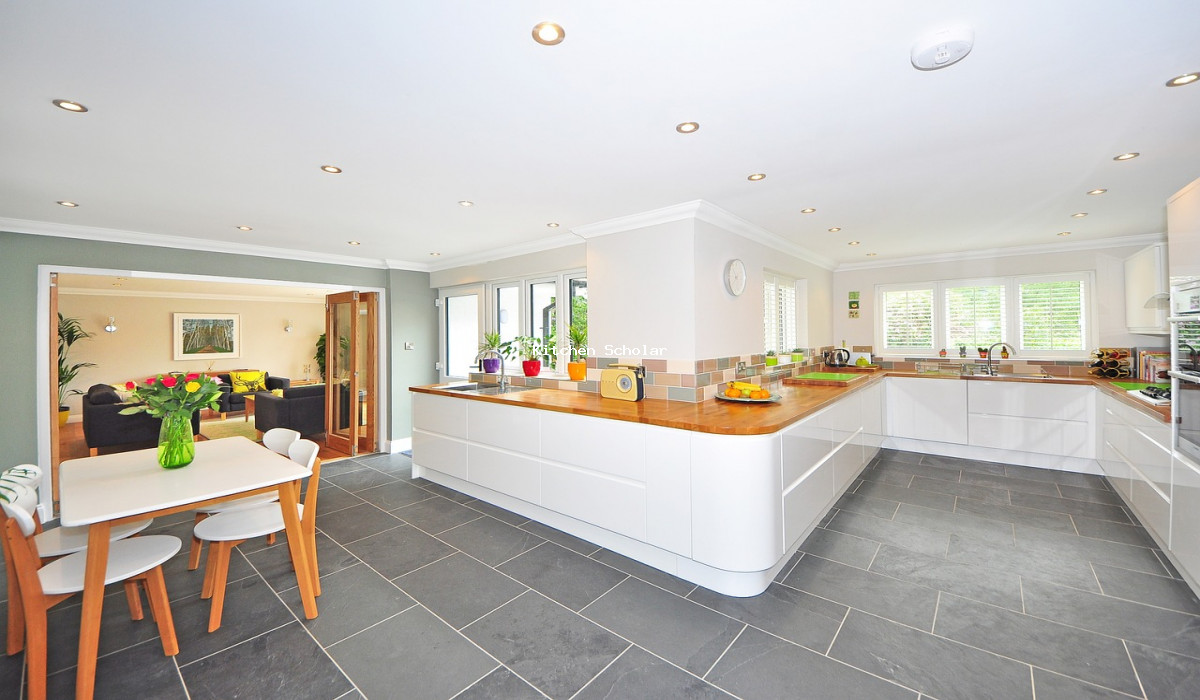Kitchen vs Bathroom Faucet: Which Works Better? 5 Key Differences to Know. Are you debating between a kitchen and bathroom faucet? Let us help you make the right decision. Discover the key differences and find out which one is best suited for your needs. Save time and money with our easy-to-read comparison. Read now!
Kitchen vs Bathroom Faucet
Kitchen vs Bathroom Faucet: Which Works Better? 5 Key Differences to Know
Kitchen vs Bathroom Faucet: Which Works Better? 5 Key Differences to Know. key differences and Kitchen vs Bathroom Faucet: Which Works Better? 5 Key Differences to Know

Kitchen vs Bathroom Faucet: The Battle of the Fixtures
The faucet is an essential fixture in any home, responsible for providing water for numerous household tasks from washing dishes to brushing teeth. The two most used faucets in our homes are the kitchen and bathroom faucets, but what sets them apart? Are they interchangeable? Let’s dive in and explore the key differences between these two fixtures.
Design and Aesthetic
One of the most apparent differences between a kitchen and a bathroom faucet is its design and aesthetic appeal. Kitchen faucets typically have a more practical and functional design, with a long, curved spout for easy dishwashing and filling large pots. On the other hand, bathroom faucets tend to be more elegant and decorative, with shorter and more detailed spouts. This is because the bathroom is a more personal space where homeowners want to add a touch of style and luxury.
Material
Kitchen and bathroom faucets can be made from various materials such as stainless steel, chrome, brass, and copper. However, kitchen faucets must be more durable and able to withstand heavy use and rough handling. Thus, they are usually made of sturdier materials such as stainless steel or brass. On the other hand, bathroom faucets can be made from more delicate materials like copper or chrome, as they do not endure the same level of wear and tear as kitchen faucets.
Size and Compatibility
The size and compatibility of a faucet are crucial factors to consider when deciding between a kitchen and bathroom faucet. Kitchen faucets are typically larger and heavier due to their robust construction, making them more challenging to install in a smaller sink or bathroom counter. Additionally, most kitchen faucets have a standard size of 8 inches, while bathroom faucets can come in various sizes, including 4 inches for smaller sinks.
Water Flow and Pressure
Water flow and pressure are essential considerations when choosing a faucet, as it affects the overall functionality of the fixture. Kitchen faucets usually have a higher water flow rate as they are used for tasks that require a more significant volume of water, such as filling pots and washing dishes. On the other hand, bathroom faucets have a lower flow rate as they are mainly used for tasks like handwashing and brushing teeth, which do not require as much water.
Handle Options
Another significant difference between kitchen and bathroom faucets is the handle options. Kitchen faucets come with a single handle or a two-handle design, allowing for easy temperature and flow control. The single handle also frees up space, making it easier to fit larger pots and pans in the sink. On the other hand, bathroom faucets usually have a single handle, providing ease of use and a sleeker look for the vanity area.
Installation Process
The installation process for kitchen and bathroom faucets can also differ significantly. Kitchen faucets require more complex installation as they may have additional features such as pull-out sprayers or multiple handles. They also need to be attached to a water line, which can be more challenging to configure. On the other hand, most bathroom faucets are straightforward to install, with most models coming with a standard installation kit.
Water Efficiency
With increasing concerns about water conservation, choosing a faucet with water-saving features has become essential. Kitchen faucets generally have a higher flow rate, but many models now include aerators to reduce water usage. However, bathroom faucets tend to have a lower flow rate, which is more water-efficient by design.
Price Point
When it comes to price, there can be a significant difference between kitchen and bathroom faucets. Kitchen faucets are generally more expensive due to their larger size and more robust construction. In contrast, bathroom faucets can be found at a more affordable price point, making it easier to upgrade or change the look of a bathroom without breaking the bank.
Maintenance and Cleaning
Proper maintenance and cleaning of a faucet are essential for maintaining its functionality and prolonging its lifespan. Kitchen faucets, with their heavy use, require more frequent cleaning and maintenance to prevent build-up and clogging. Bathroom faucets, on the other hand, may require less frequent cleaning, depending on usage, as they are not exposed to the same level of wear and tear.
Popular Types of Kitchen Faucets
Pull-down Faucet
This popular type of kitchen faucet features a tall, curved spout with a pull-down spray head attached. This allows for more flexibility in the sink, making it easier to fill large pots and clean deep pots and pans. However, the pull-down spray head takes up more space, so it may not be suitable for smaller sinks or counters.
Pull-out Faucet
This faucet is similar to a pull-down faucet but instead has a spray head that pulls out towards you. This feature allows for better maneuverability in the sink, making it easier to wash and rinse larger dishes and pans. The pull-out faucet is more compact than its pull-down counterpart, making it ideal for smaller sinks or counters.
Commercial-style Faucet
This type of kitchen faucet is seen in many professional kitchens, featuring a tall, high-performance spout with a pull-down spray head. The commercial-style faucet is perfect for heavy-duty usage and adds a modern, industrial touch to the kitchen. However, it may not be suitable for smaller kitchens where space is limited.
Touchless Faucet
In recent years, touchless faucets have gained popularity due to their convenience and hygiene benefits. These faucets use motion sensors to turn on and off, making it easy to use when your hands are dirty or full. However, they do require a power source, and the sensor can be sensitive to movements, causing the water to turn on and off unintentionally.
Popular Types of Bathroom Faucets
Centerset Faucet
A centerset faucet is typically used in bathrooms with smaller sinks or vanity spaces. It features a spout and two separate handles, one for hot and one for cold water. Centerset faucets are compact and straightforward to install, making them a popular choice for bathrooms.
Widespread Faucet
Widespread faucets feature a spout and two separate handles, like the centerset faucet, but with a more significant distance between them. This design is ideal for larger sinks or countertops, providing a more elegant and modern look. However, widespread faucets can be more challenging to install and require a larger space.
Wall-mounted Faucet
Wall-mounted faucets are mounted on the wall above the sink, rather than on the sink or countertop itself. This installation option provides a more unique and modern look and can free up space on the countertop. However, they can be more difficult to install, and the water lines need to be in the wall behind the sink.
Vessel Sink Faucet
Vessel sinks are becoming increasingly popular in modern bathrooms, and vessel sink faucets are designed specifically to work with these types of sinks. They are taller than other bathroom faucets to accommodate the height of the vessel sink, providing a trendy and modern look to the bathroom.
Kitchen vs Bathroom Faucets: Which is Better?
When it comes down to it, the choice between a kitchen and bathroom faucet is subjective and ultimately depends on your specific needs and preferences. Kitchen vs Bathroom Faucet, there are a few key factors to consider when deciding which fixture is right for you.
Features
Kitchen faucets typically come with more features, such as pull-out or pull-down spray heads, water-saving aerators, and even touchless technology. While bathroom faucets may offer fewer features, they can still have touchless options and come in various designs to match your aesthetic preferences.
Water Flow and Pressure
If you need a faucet for heavy-duty tasks like dishwashing or filling large pots, a kitchen faucet with a high water flow rate and pressure would be the better option. Kitchen vs Bathroom Faucet, if you are more concerned with conserving water, a bathroom faucet with a lower flow rate would be more suitable.
Size and Compatibility
The size of your sink or counter will significantly impact which faucet you can install. If you have a smaller sink or countertop, a bathroom faucet’s more compact design may be a better choice. In contrast, a larger sink or countertop may accommodate a kitchen faucet better.
Kitchen vs Bathroom Faucet: Which Works Better? 5 Key Differences to Know
Are you debating between a kitchen and bathroom faucet? Let us help you make the right decision. Discover the key differences and find out which one is best suited for your needs. Save time and money with our easy-to-read comparison. Read now!. faucet Kitchen vs Bathroom Faucet: Which Works Better? 5 Key Differences to Know
Kitchen vs Bathroom Faucet:

About Kitchen vs Bathroom Faucet
Kitchen and bathroom faucets are essential fixtures in any home, serving the purpose of providing clean water for everyday use. While both are designed to do the same functionKitchen vs Bathroom Faucet, there are some notable differences between the two. Understanding the differences between the kitchen and bathroom faucet can help you make an informed decision about which one to use in each location.
Size and Design
The first noticeable difference between kitchen and bathroom faucets is size and design. Kitchen faucets, which are used for washing dishes, pots, and pans, tend to be larger and more robust in design compared to bathroom faucets, which are used for handwashing and grooming purposes. Kitchen faucets also have higher spouts compared to bathroom faucets, allowing greater distance for filling and cleaning large pots and dishes. Bathroom faucets, on the other hand, often have a more decorative design to complement the rest of the bathroom decor.
Water Flow Rate
One of the crucial factors to consider when choosing between a kitchen and a bathroom faucet is the water flow rate. In general, kitchen faucets are designed for higher flow rates to accommodate the need for washing large dishes and pots. On the other hand, bathroom faucets have a lower flow rate due to the water-saving regulations put in place. This lower flow rate also helps prevent splashing and water wastage during handwashing or brushing teeth.
Mounting
Another significant difference between kitchen and bathroom faucets is how they are mounted. Kitchen faucets typically have a top-mount design, meaning they are mounted on top of the sink. This design allows for a more secure and sturdier mount when dealing with the added weight and stress of heavier pots and dishes. In contrast, bathroom faucets are commonly mounted on the countertop or wallKitchen vs Bathroom Faucet, providing a more elegant and streamlined look to the bathroom.
Functionality
While kitchen and bathroom faucets share the same basic functionality, there are some distinct features that separate the two. For instance, kitchen faucets often have features such as spray heads and retractable hoses for added convenience when washing dishes. Bathroom faucets, on the other hand, may come with additional features such as single-handle or sensor-activated faucets, making it easier to use when hands are full or wet.
Materials
The materials used to make kitchen and bathroom faucets differ significantly. Kitchen faucets are made from more durable materials, such as stainless steel and brass, to withstand the heavy usage and weight from larger pots and dishes. On the other hand, bathroom faucets are generally made from lighter materials, such as chrome and nickel, to complement the bathroom’s overall aesthetics.
Installation
Installing a kitchen or bathroom faucet can be a straightforward process, but the installation methods differ for each. Kitchen faucets often come with more parts and pieces, such as a separate sprayer, which can make the installation a bit more complicated. Bathroom faucets, on the other hand, are typically easier to install, with fewer components and a simpler design.
Cost
The cost of a faucet can also vary between a kitchen and bathroom faucet. Kitchen faucets tend to be more expensive than bathroom faucets, due to their larger size, higher flow rate, and more durable materials. Bathroom faucets, on the other hand, are relatively cheaper and come in a wide range of prices to suit different budgets.
Longevity
Another factor to consider when comparing kitchen and bathroom faucets is their longevity. Due to the heavier usage and higher water flow rates, kitchen faucets may experience more wear and tear compared to bathroom faucets. Kitchen vs Bathroom Faucet, with proper maintenance and regular cleaning, both types of faucets can last for many years without any significant issues.
Water Quality
The main purpose of a faucet is to provide clean, potable water for consumption. When it comes to water quality, there is not much difference between kitchen and bathroom faucets. Both types are designed to meet the same water quality standards and provide safe drinking water.
Conclusion
In conclusion, kitchen and bathroom faucets may seem interchangeableKitchen vs Bathroom Faucet, but they do have some notable differences. From their size and design to their functionality and cost, there are various factors to consider when choosing between a kitchen and bathroom faucet. Ultimately, the decision will depend on your personal preferences and the specific needs of each location in your home. Regardless of your choice, it is essential to take proper care of your faucet to ensure its longevity and continued functionality. Kitchen vs Bathroom Faucet: Which Works Better? 5 Key Differences to Know

Kitchen vs Bathroom Faucet: Which Works Better? 5 Key Differences to Know
What is the difference between a kitchen faucet and a bathroom faucet?
A kitchen faucet is typically used for washing dishes and preparing meals, while a bathroom faucet is meant for brushing teeth, washing hands, and other personal hygiene purposes. Kitchen vs Bathroom Faucet, both faucets serve the same purpose of providing water.
Can I use a kitchen faucet in the bathroom?
Technically, you can install a kitchen faucet in the bathroom. However, it may not fit aesthetically with the bathroom décor and may not be appropriate for tasks such as washing hands and brushing teeth.
What is the standard size for a kitchen faucet?
Most kitchen faucets are 8-16 inches wideKitchen vs Bathroom Faucet, with the standard size being 8 inches. However, some larger sinks may require a wider faucet to ensure proper coverage.
Are bathroom and kitchen faucets interchangeable?
While some bathroom and kitchen faucets may look similarKitchen vs Bathroom Faucet, they are designed for different purposes and may not be interchangeable. It is best to use the appropriate faucet for each space for optimal functionality and aesthetics.
What is the average lifespan of a kitchen or bathroom faucet?
The average lifespan of a faucet is between 10-15 years. Kitchen vs Bathroom Faucet, this can vary depending on usage, quality of waterKitchen vs Bathroom Faucet, and maintenance. Regular cleaning and timely repairs can help prolong the lifespan of your faucet.
Can I use the same type of faucet in both my kitchen and bathroom?
Yes, you can use the same type of faucet in both your kitchen and bathroom. This can create a cohesive look in your home’s design. Kitchen vs Bathroom Faucet, keep in mind that the type of faucet should align with the tasks performed in each space.
Do kitchen and bathroom faucets have different installation processes?
While the basic installation process is the same for both types of faucets, there may be some differences. For example, bathroom faucets may require different water supply connections and may have different mountings. It is best to follow the manufacturer’s instructions for installation.
What is the typical height of a bathroom faucet?
The standard height of a bathroom faucet is 6 inches from the counter to the spout. Kitchen vs Bathroom Faucet, some faucets may have higher or lower heights depending on the design and intended use.
Can I use a kitchen faucet with a bathroom sink?
While technically possibleKitchen vs Bathroom Faucet, it is not recommended to use a kitchen faucet with a bathroom sink. Kitchen faucets typically have larger spouts and may cause splashing in a smaller bathroom sink. Additionally, they may not align aesthetically with the bathroom design.
What are the main types of faucets available for kitchens and bathrooms?
The main types of faucets include single-handle, double-handle, pull-out, and pull-down faucets. Kitchen vs Bathroom Faucet, there are also specialized faucets such as wall-mounted, Kitchen vs Bathroom Faucet, and pot-filler faucets that are designed for specific purposes. Kitchen vs Bathroom Faucet: Which Works Better? 5 Key Differences to Know
